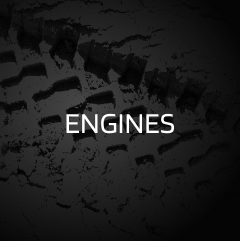 CCA Spares
CCA Spares
Lubrication Systems – Nourishing the Heart of the Engine
As we progress in our exploration of internal combustion engines, our focus now turns to a critical component that ensures the smooth operation and longevity of the engine: the lubrication system. Join us in understanding the functions, components, and significance of lubrication systems in providing essential care to the engine’s moving parts.
Functions of the Lubrication System:
Explore the primary functions of the lubrication system:
- Friction Reduction: The lubrication system minimizes friction between moving parts, preventing wear and extending the lifespan of engine components.
- Heat Dissipation: Lubricants absorb and dissipate heat generated during engine operation, preventing overheating and ensuring optimal performance.
- Debris Removal: The system helps remove contaminants and debris, maintaining cleanliness within the engine.
Components of Lubrication Systems:
Dive into the key components that make up a lubrication system:
- Oil Pump: The pump is responsible for circulating lubricant (oil) throughout the engine.
- Oil Pan: The oil pan serves as a reservoir for oil and is equipped with a strainer to filter out larger contaminants.
- Oil Filter: The filter removes smaller particles and impurities from the oil.
- Oil Cooler: In some systems, an oil cooler helps regulate oil temperature by dissipating heat.
Types of Lubrication Systems:
Explore the two primary types of lubrication systems:
- Splash Lubrication: Common in simpler engines, splash lubrication relies on the natural splashing of oil by rotating components.
- Pressure Lubrication: More advanced engines use pressure lubrication, where oil is actively pumped and circulated under pressure.
Lubricant Properties:
Understand the essential properties of lubricants:
- Viscosity: Viscosity refers to the thickness of the oil and its resistance to flow. It plays a crucial role in providing adequate lubrication.
- Additives: Lubricants may contain additives that enhance properties such as viscosity index, thermal stability, and resistance to oxidation.
Oil Circulation Process:
Dive into the systematic flow of oil through the lubrication system, from the oil pan to the oil pump, through various passages, and ultimately returning to the oil pan. Explore how this continuous cycle ensures effective lubrication.
Oil Pressure and Monitoring:
Maintaining optimal oil pressure is crucial for the lubrication system’s effectiveness. Learn about the role of the oil pressure relief valve and the importance of monitoring oil pressure through gauges and sensors.
Maintenance of Lubrication Systems:
Proper maintenance is essential for the health of the lubrication system. Explore practices such as regular oil changes, filter replacements, and the use of high-quality lubricants to ensure optimal performance.
Advancements in Lubrication Technology:
Advancements in lubrication technology continue to improve engine efficiency. Explore innovations such as synthetic oils, which offer enhanced performance and durability compared to traditional mineral oils.
In conclusion, the lubrication system serves as the lifeblood of the engine, ensuring smooth operation and longevity. This article has provided a comprehensive exploration of its functions, components, and significance in maintaining the health of internal combustion engines. Stay tuned for the next installment as we continue our journey through the intricate components of internal combustion engines.

